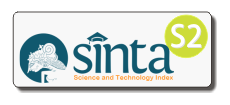Exploring the Brand Effect of Islamic Bank on the General Population of Scotland
DOI:
https://doi.org/10.14421/grieb.2021.091-09Keywords:
Islamic Banks, Marketing Islamic Finance, and Brand EffectAbstract
The United Kingdom (UK) currently has one of the most attractive regulatory and tax systems in the world for Islamic finance, as well as being far ahead of other western nations for provision of Islamic finance, with five sharia-compliant banks. Yet despite this, the patronage of these banks is extremely low, often times below that of smaller building societies. While the largest Islamic bank in the UK, Al Rayan (formerly Islamic Bank of Britain), have one third of its customer base have religious affiliations other than Islam, and a further 80% of all fixed-term deposits also patroned by non-Muslims. This study explores why general consumers do not pursue patronage with Islamic banking.This is an inductive research enquiry that uses descriptive statistics within a social constructivist paradigm to construct a line of reasoning, based on the primary data is collected through detailed questionnaire (n=29).The findings from this research highlight the need for Islamic banks to better fund information programmes, advertisements and promotions to further spread awareness of their offerings as consumers are positive in their reception to Islamic finance concepts but unaware of its offerings.
Downloads
 Abstract viewed: 694 times
|
Abstract viewed: 694 times
|
 PDF downloaded = 422 times
PDF downloaded = 422 times
References
Abduh, M., & Omar, A. (2010). Who patronises Islamic banks in Indonesia? Journal of Islamic Law, Management and Finance, 40-53.
Abdullah, A. A., Sidek, R., & Adnan, A. A. (2012). Perception of non-muslims customers towards Islamic banks in Malaysia. International Journal of Business and Social Science, 3(11), 151-163.
Abdul-Rahman, Y. (2014). The art of RF (riba-free) Islamic banking and finance: Tools and techniques for community-based banking (Second Edition, Wiley Finance Series ed.). Wiley.
Akbar, S., & Shah, S. Z. (2012). An investigation of user perceptions of Islamic banking practices in the United Kingdom. International Journal of Islamic and Middle Eastern Finance and Management, 5(4).
Al Rayan Bank. (2014). Majority of non-Muslim UK consumers believe that Islamic finance is relevant to all faiths. Retrieved from Al Rayan Bank: https://www.alrayanbank.co.uk/useful-info-tools/about-us/latest-news/jan-dec-2014/majority-of-non-muslim-uk-consumers-believe-that-islamic-finance-is-relevant-to-all-faiths/
Al Rayan Bank. (2019). About us. Retrieved from Al Rayan Bank: https://www.alrayanbank.co.uk/useful-info-tools/about-us/
Al Rayan Bank. (2019). About us: Branch Finder. Retrieved from Al Rayan Bank: https://www.alrayanbank.co.uk/useful-info-tools/about-us/branch-finder/
Al-Ajmi, J., Hussain, H. A., & Al-Saleh, N. (2009). Clients of conventional and Islamic banks in Bahrain: How they choose which bank to patronize. International Journal of Social Economics, 36(11), 1086-1112. https://www.doi.org/10.1108/03068290910992642
Alharbi, A. (2015). Development of the Islamic banking system. Journal of Islamic Banking and Finance, 3(1), 12-25. http://dx.doi.org/10.15640/jibf.v3n1a2
Ali, S. S. (2004). Islamic modes of finance and associated liquidity risks (Conference on Monetary Sector in Iran: Structure, Performance and Challenging Issues, Tehran, Iran).
Al-Marwyne, M. (1985). Islamic bank and its areas of work: Comparative study (Master's Thesis, Umm al-Qura, Mecca, Saudi Arabia).
Al-Omar, F. A., & Abdel-Haq, M. K. (1996). Islamic banking: Theory, practice and challenges. Zed Books.
Al-Razi, F. a.-D. (n. d.). Al-tafsir al-kabir. Iran.
Alshenqeeti, H. (2014). Interviewing as a data collection method: a critical review. 3(1). doi:10.5430/elr.v3n1p39
Awan, H. M., & Khuram, S. S. (2011). Customer's criteria for selecting an Islamic bank: Evidence from Pakistan. Journal of Islamic Marketing, 2(1), 14-27. doi:10.1108/17590831111115213
Baruch, Y., & Holtom, B. C. (2008). Survey response rate levels and trends in organizational research. Human Relations, 61(8), 1139-1160. doi:10.1177/0018726708094863
Becker, H. S. (1998). Tricks of the trade: how to think about your research while you're doing it. Chicago: Chicago University Press.
Böhmler, R. (2007, December 5). Speech to 2nd Islamic financial services forum: The European challenge. Frankfurt am Main, Germany.
Braun, V., & Clarke, V. (2006). Using thematic analysis in psychology. Qualitative Research in Psychology, 3(2), 77-101.
Briault, C. (2007, Oktober 17). London: Centre of Islamic Finance? Speech to industry forum. London, United Kingdom.
Bryman, A., & Bell, E. (2015). Business research methods (4th ed.). Oxford: Oxford University Press.
Bulmer, M., Sturgis, P. J., & Allum, N. (2009). Secondary Analysis of Survey Data. Los Angeles : Sage.
Chachi, A. (2005). Origin and Development of Commercial and Islamic Banking Operations. Journal of King Abdulaziz University - Islamic Economics, 18(2), 3-25. doi:10.4197/islec.18-2.1
Chovanova, H. H., Korshunov, A. I., & Babcanova, D. (2015). Impact of brand on consumer behavior. Procedia Economics and Finance, 34, 615-621.
Clarke, V., Braun, V., & Hafield, N. (2015). Thematic Analysis. In J. A. Smith, & J. A. Smith (Ed.), Qualitative Psychology: A practical guide to research methods (3 ed., pp. 222-248). age.
Dar, H. A. (2005). Demand for Islamic financial services in the UK: Chasing a mirage? Loughborough University, Department of Economics. Leicestershire: Loughborough University. Retrieved from https://hdl.handle.net/2134/335
De Vaus, D. (2014). Surveys in social research (sixth ed.). Abingdon: Routledge.
Dilman, D. A., Smyth, J. D., & Christian, J. M. (2014). Internet, phone, mail and mixed mode surveys: the tailored design method (Fourth ed.). Hoboken: Wiley.
Dixon, R. (1992). Islamic banking. International Journal of Bank Marketing, 10(6), 32-37.
Dörnyei, Z. (2007). Research methods in applied linguistics: quantitative qualitative, and mixed methodologies. Oxford: Oxford University Press.
El-Gamal, M. A. (2006). Islamic Finance: Law, Economics and Practice. Cambridge: Cambridge University Press.
Erol, C., & El-Bdour, R. (1989). Attitudes, behaviour, and patronage factors of bank customers towards islamic banks. International Journal of Bank Marketing, 7(6), 31-37. doi:10.1108/02652328910132060
Erol, C., El-Bdour, R., & Kaynak, E. (1990). Convetional and islamic banks: patronage behaviour of jordanian customers. International Journal of Bank Marketing, 8(4), 25-35. doi:10.1108/02652329010004231
Etikan, I., Alkassim, R., & Abubakar, S. (2015). Comparison of snowball sampling and sequential sampling technique. Biometrics & Biostatistics International Journal, 3(1). doi:10.15406/bbij.2015.03.00055
Firdaus, A. (2019, May 10). The UK can be a world leader in Islamic finance. Retrieved from The Telegraph: https://www.telegraph.co.uk/business/business-reporter/uk-islamic-finance/
Habib, S. F. (2018). Fundamentals of Islamic finance and banking. Chichester, England: Wiley.
Halifax. (2020, January 7). Car finance: compare. Retrieved from Halifax: https://www.halifax.co.uk/car-finance/compare/
Haron, S., Ahmad, N., & Planisek, S. L. (1994). Bank Patronage factors of Muslim and Non-Muslim customers. International Journal of Bank Marketing, 12(1), 32-40. Retrieved from http://citeseerx.ist.psu.edu/viewdoc/download?doi=10.1.1.533.8736&rep=rep1&type=pdf
Hassan, K. M., & Ahmad, A. U. (2007). Riba and Islamic banking. Journal of Islamic Economics, Banking and Finance, 3. Retrieved from https://www.researchgate.net/profile/M_Kabir_Hassan/publication/228672983_Riba_and_Islamic_Banking/links/00b49531860922c718000000.pdf
Heckathorn, D. D. (2011). Snowball versus respondent-driven sampling. Sociological Methodology, 41(1), 355-366. doi:10.1111/j.1467-9531.2011.01244.x
Housby, E. (2013). Islamic and ethical finance in the United Kingdom (Edinburgh guides to Islamic Finance). VLeBooks.
Iqbal, M., & Molyneux, P. (2005). History and growth of Islamic Banking and Finance. In M. Iqbal, & P. Molyneux, Thirty Years of Islamic Banking (pp. 36-71). London: Palgrave Macmillan. doi:10.1007/978-0-230-50322-9_4
Jamieson, M. (2013). Ethnicity and religion in northumberland: Northumberland knowledge research Report. Northumberland County Council, Policy and Research Team. Northumberland County Council.Retrievedfromhttps://www.northumberland.gov.uk/NorthumberlandCountyCouncil/media/Northumberland-Knowledge/NK%20people/Demographics/Ethnicity-and-Religion-March-2013.pdf
Jenkins, P. (2012, October 7). HSBC's Islamic closures highlight dilemma. Retrieved from Financial Times: https://www.ft.com/content/bdb5f212-0f1c-11e2-9343-00144feabdc0
Karsten, I. (1982). Islam and financial intermediation. International Monetary Fund Staff Papers, 29(1), 111 (108-142).
Kitzinger, C., & Willmott, J. (2002). The thief of womanhood': women's experience of polycystic ovarian syndrome. Social science & medicine, 54(3), 349-361.
Lane, M. (2019). The definitive guide to Sharia Banking & Islamic Finance in the UK. (money) Retrieved from money: https://www.money.co.uk/savings-accounts/the-definitive-guide-to-sharia-banking-and-islamic-finance-in-the-uk.htm
Lloyds Bank. (2020). Car finance: Need help buying a car? Retrieved from LLoyds Bank: https://www.lloydsbank.com/car-finance/buyers-help.asp
Mansour, W., Abdelhamid, M. B., Masood, O., & Niazi, G. S. (2010). Islamic banking and customers' preferences: the case of the UK. Qualitative Research in Financial Markets, 2(3), 185-199. doi:10.1108/17554171011091746
Marimuthu, M., Jing, C. W., Gie, L. P., Mun, L. P., & Ping, T. Y. (2010). Islamic banking: selection criteria and implications. Global Journal of Human Social Science, 10(4), 52-62.
Meyer, H. (2019, March 4). Cheap Personal Contract Purchase: How to find the best deal for you. (J. Noble, Editor, & MoneySavingExpert) Retrieved from MoneySavingExpert: https://www.moneysavingexpert.com/car-finance/personal-contract-purchase/
Office for National Statistics. (2020, March 18). Local Statistics. Retrieved from ONS: https://www.ons.gov.uk/help/localstatistics
Oppenheim, A. N. (2000). Questionnaire Design, Interviewing and Attitude Measurement (New ed.). London: Continuum International.
Osmani, N. M., & Abdullah, F. (2010). Musharakah mutanaqisah home financing: a review of literatures and practices of Islamic Banks in Malaysia. International Review of Business Research Papers, 6(2), 272-282.
Oxford University Press. (2020, April). Haram Adjective - Definition, Pictures, Pronunciation and Usage Notes. Retrieved April 2, 2020, from Oxford Advanced Learner's Dictionary: https://www.oxfordlearnersdictionaries.com/definition/english/haram
Rammal, H. G. (2004). Financing through musharaka: Principles and application.
Rea, L. M., & Parker, R. A. (2014). Designing and conducting survey research: A comprehensive guide (4th ed.). San Francisco, California, United States of America: Jossey-Bass.
Richards, K. (2003). Qualitative Inquiry in TESOL. Springer.
Richards, L. (2014). Handling qualitative data: A practical guide. London: Sage.
Ryu, K. P., Piao, S. Z., & Nami, D. (2012). A Comparative study between the Islamic and conventional banking systems and its implications. Journal of Business Administration Research, 2(5), 48-54.
Saeed, A. (2001). The Muslim community cooperative of Australia as an Islamic financial service provider. Sydney: University of New South Wales Press.
Saleh, N. A., & Ajaj, A. M. (1992). Unlawful gain and legitiamte profit in Islamic law: Riba, gharar and Islamic banking. Cambridge.
Saunders, M., Lewis, P., & Thorn-hill, A. (2015). Research methods for business students (Seventh ed.). VLeBooks.
Saunders, M., Lewis, P., & Thornhill, A. (2016). Research methods for Business Students (7th ed.). Harlow: Pearson.
Schoon, N. (2016). Modern Islamic Banking: Products, processes in practice. Chichester, West Sussex, United Kingdom: John Wiley & Son. Retrieved from https://learning.oreilly.com/library/view/modern-islamic-banking/9781119127208/c01.xhtml#c1
Selamat, Z., & Abdul-Kadir, H. (2012). Attitude and Patronage Factors of Bank Customers in Malaysia: Muslim and non-Muslim views. Journal of Islamic Economics, Banking and Finance, 8,87100.Retrievedfromhttps://www.researchgate.net/publication/259764151_Attitude_and_Patronage_Factors_of_Bank_Customers_in_Malaysia_Muslim_and_non-Muslim_Views
Skurnik, I., Schwarz, N., & Winkielman, P. (2000). Drawing inferences from feelings: The role of naive beliefs. The message within: The role of subjective experience in social cognition and behavior, 162-175.
Stocker, F., & Zacher, S. (2009). Regulierungsbehörde will islamkonformen Banken den Weg nach Deutschland ebnen. Die Welt, 13.
TheCityUK. (2017). Global Trends in Islamic Finance and the UK Market. Salisbury House, Finsbury Circus, London: TheCityUK. Retrieved October 24, 2019, from http://ethicalfinancehub.org/wp-content/uploads/2017/12/Global-trends-in-Islamic-finance-and-the-UK-market-2017.pdf
Usmani, M. M. (1998). An introduction to Islamic finance (1st ed.). Karachi, Pakistan: Idaratul Ma'arif.
Vogel, F. E., & Hayes, S. L. (1998). Islamic law and finance: Religion, risk, and return. Massachusetts, USA: Kluwer Law International School.
Volk, S., & Pudelko, M. (2010). Challenges and opportunities of Islamic retail banking in the European context: Lessons to be learnt from a British-German comparison. Journal of Financial Services Marketing, 15(3), 191-202.
Wackerbeck, P. (2006). Islamische bankprodukte in europa: zwischen ethno-marketeing und ethischem investment. Die Bank, 6, 42-45.
Wan Ahmad, W. (2006). Choice of financing amongst Malaysia: Between religiosity and perception. Proceedings of National Seminar in Islamic Banking and Finance. Nilai.
Warde, I. (2000). Islamic finance in the global economy. Edinburgh, Scotland: Edinburgh University Press.
White, L. (2018, August 16). British public don't trust banks 10 years after crisis, survey finds. (Reuters) Retrieved March 27, 2020, from Reuters: https://uk.reuters.com/article/uk-britain-banks/british-public-dont-trust-banks-10-years-after-crisis-survey-finds-idUKKBN1L11EL
Ya, S., Nor, M. M. N., Noor, S. M., & Ahmad, Z. (2017). Purchase intention of Islamic brand product among non-muslim customers. Pertanika Journal of Social Sciences & Humanities, 25.
Yusoff, M. E., & Shamsuddin, A. S. (2003). Muslim consumer attitude towards Islamic finance products in a non Muslim country. Jurnal Kemanusiaan, 94-103. Retrieved January 10, 2020, from https://www.researchgate.net/publication/45834625_Muslim_Consumer_Attitude_towards_Islamic_Finance_Products_in_a_Non_Muslim_Country
Zick, A., & Küpper, B. (2009). Attitudes towards the Islam and Muslims in Europe: Selected results of the study "Group-focused enmity in Europe". GFE-Europe Research Report.
Downloads
Published
Issue
Section
License
Global Review of Islamic Economics and Business is licensed under a
Creative Commons Attribution-ShareAlike 4.0 International License



















